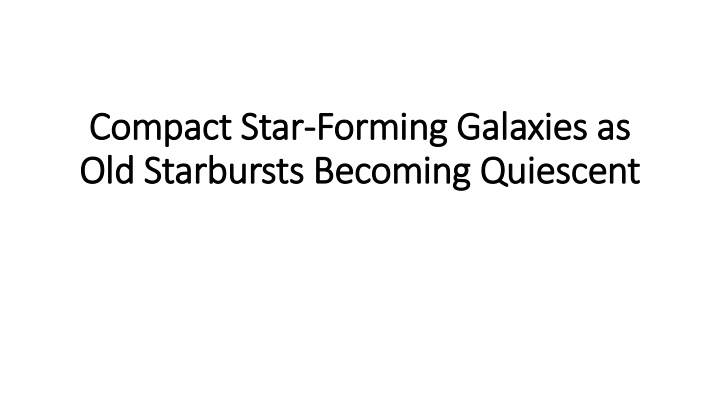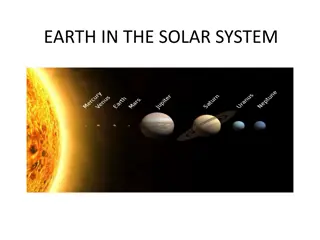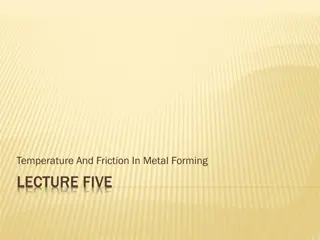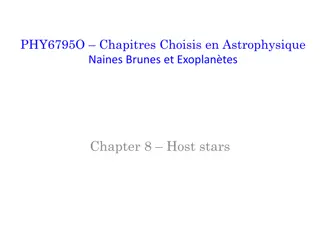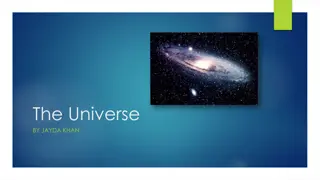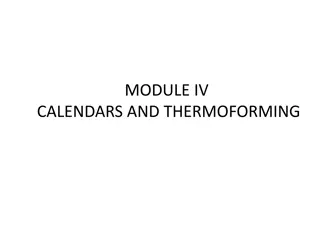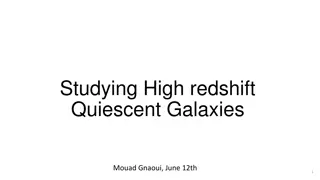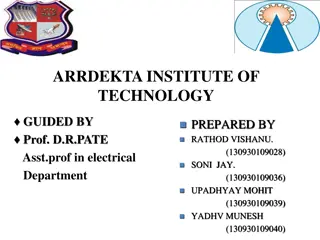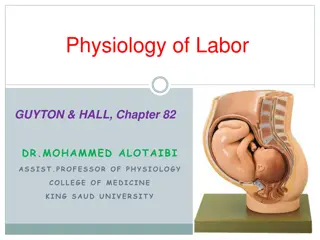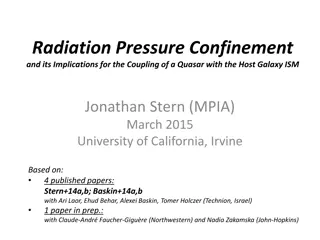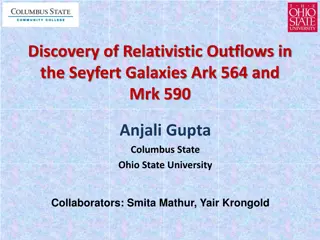Evolution of Compact Star-Forming Galaxies and Quiescent Galaxies
The evolution of galaxies from compact star-forming to quiescent states involves processes such as secular evolution, gas inflows, and star formation quenching. By studying the structural relations and star formation in these galaxies, insights are gained into their transition towards quiescence. The compactness and star formation trends differ for varying galaxy masses, highlighting the complex interplay between star formation and galaxy evolution.
Download Presentation

Please find below an Image/Link to download the presentation.
The content on the website is provided AS IS for your information and personal use only. It may not be sold, licensed, or shared on other websites without obtaining consent from the author.If you encounter any issues during the download, it is possible that the publisher has removed the file from their server.
You are allowed to download the files provided on this website for personal or commercial use, subject to the condition that they are used lawfully. All files are the property of their respective owners.
The content on the website is provided AS IS for your information and personal use only. It may not be sold, licensed, or shared on other websites without obtaining consent from the author.
E N D
Presentation Transcript
Compact Star Compact Star- -Forming Galaxies as Forming Galaxies as Old Starbursts Becoming Quiescent Old Starbursts Becoming Quiescent
1. INTRODUCTION 1. INTRODUCTION main sequence (MS) of star formation secular evolution is the dominant mode of stellar growth where gas inflows, outflows, and consumption through star formation are in equilibrium. SFGs spend most of their time evolving as extended star-forming disks. quiescent galaxies (QGs), having low specific star formation rate (sSFR), are located below the MS and are typically more compact than SFGs for a fixed stellar mass and redshift compact star-forming galaxies (cSFGs) Did the build-up of the stellar core, formation of cSFGs, and subsequent quenching of star formation happen as the product of the slow secular evolution or rapidly?
2.SELECTION OF COMPACT STAR 2.SELECTION OF COMPACT STAR- -FORMING GALAXIES GALAXIES cSFGs are galaxies that follow the structural relation of QGs, while being star-forming. compactness selection threshold FORMING the core density QGs selection threshold 2.1. Optical Sample 3D-HST survey catalogs 0.5 < z < 3.0 13703 galaxies (7222 in COSMOS and 6481 in GOODS-North) with 416 cSFGs (227 in COSMOS and 189 in GOODSNorth).
2.2. Far 2.2. Far- -Infrared Sample Infrared Sample The super-deblended FIR to submillimeter photometric catalogs in COSMOS and GOODS-North 968 galaxies (357 in COSMOS and 611 in GOODS-North) with 73 cSFGs (26 in COSMOS and 47 in GOODSNorth). 2.2.1. Rayleigh-Jeans and Radio Subsets RayleighJeans (R-J) side of the FIR spectral energy distribution (SED):S/N 3 above a rest-frame wavelength of 250 m ------required to obtaingas mass estimates. 59 galaxies (24 in COSMOS and 35 in GOODS-North) with 5 cSFGs (4 in COSMOS and 1 in GOODS-North). cross-matched our FIR catalog with radio catalogs from the Giant Metrewave Radio Telescope (GMRT). at least two S/N 5 detections at any available radio frequency. 60 galaxies (23 in COSMOS and 37 in GOODS-North) with 7 cSFGs (2 in COSMOS and 5 in GOODS-North).
3. COMPACTNESS AND STAR FORMATION 3. COMPACTNESS AND STAR FORMATION extended compact Overall, galaxies start to transition smoothly towards quiescence, since MS decreases continuously for increasing QGs . Some extended SFGs quench forming extended QGs as they build up their stellar cores. On the other hand, the sharp transition region at QGs 1.0 indicates that other galaxies become compact before they quench.
Trends for Massive Galaxies Overall, the trends are similar than those discussed in the previous section. MS is not approximately constant up to QGs = 0.5 anymore, but it rather starts to decay since the first bin centered at QGs = 0.1.
4. ARE COMPACT STAR 4. ARE COMPACT STAR- -FORMING GALAXIES NORMAL STAR FORMING GALAXIES NORMAL STAR- -FORMING GALAXIES OR STARBURSTS? GALAXIES OR STARBURSTS? FORMING Revealing their nature implies revealing whether the transition to quiescence occurred secularly or rapidly. three diagnostics of the burstiness of star formation: 1) SFE 2) ISM 3) radio emission.
Diagnostic 1: Star Formation Efficiency There is no evidence for a distinct SFE in cSFGs and extended SFGs, suggesting that both secular and rapid evolution processes could generate cSFGs.
Diagnostic 2: Interstellar Medium This suggest that the growth of a compact stellar core leading to cSFGs could happen secularly. Another explanation could be that if coming from a rapid starburst event, the latent ISM in cSFGs retains similar properties to that of upper-MS normal SFGs.
Diagnostic 3: Radio Emission There is evidence for a trend in increasing compactness with the expected age evolution of the radio emission in SBs, indicating that cSFGs could be old SBs, while extended SFGs could be a mix of normal SFGs and young SBs.
5. DISCUSSION two additional behaviours of the general evolutionary trend of the galaxy population. The apparent contradictory conclusions drawn from the SFE and ISM diagnostics versus the radio emission diagnostic can be reconciled if the SFE and ISM properties do not dominate the entire galaxy in an old SB phase, in agreement with resolved follow-up studies in the literature.
6. SUMMARY AND CONCLUSIONS The distribution of galaxies in the MS- QGs plane reveal that galaxies transition smoothly towards quiescence with increasing compactness. The MS is dominated by extended SFGs. However, SFGs with increasing compactness that are transitioning to quiescence contribute to lower the normalization of the MS. There is no evidence for a distinct SFE in cSFGs and extended SFGs, suggesting that both secular and rapid evolution processes could generate cSFGs. Extended SFGs located slightly above the MS (upper-MS galaxies) have ISM properties (CO excitation, density of the neutral gas, and strength of the ultraviolet) similar to lower envelope of SBlike ISM properties, There is evidence for a trend in increasing compactness with the expected age evolution of the radio emission in SBs.
